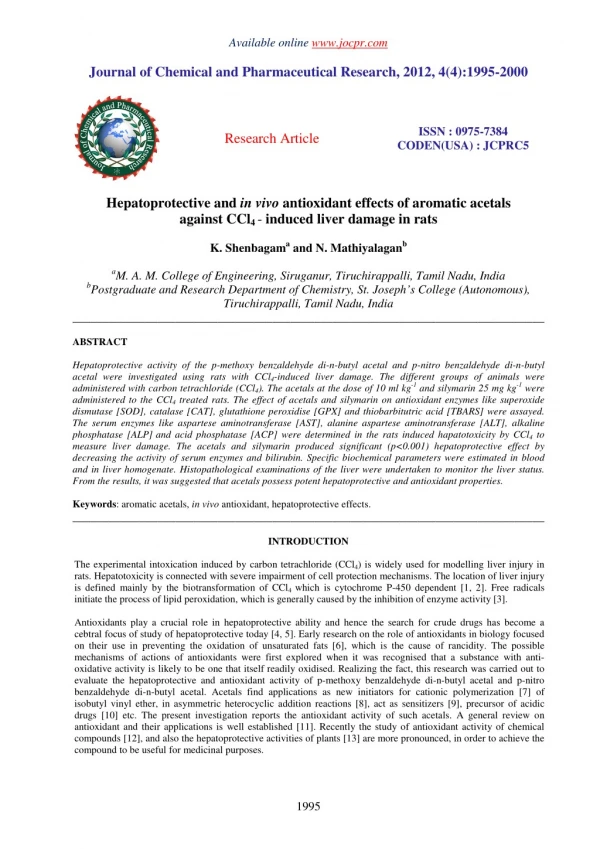Hepatoprotective and in vivo antioxidant effects of aromatic acetals against CCl4 - induced liver damage in rats
Hepatoprotective activity of the p-methoxy benzaldehyde di-n-butyl acetal and p-nitro benzaldehyde di-n-butyl acetal were investigated using rats with CCl4-induced liver damage. The different groups of animals were administered with carbon tetrachloride (CCl4). The acetals at the dose of 10 ml kg-1 and silymarin 25 mg kg-1 were administered to the CCl4 treated rats. The effect of acetals and silymarin on antioxidant enzymes like superoxide dismutase [SOD], catalase [CAT], glutathione peroxidise [GPX] and thiobarbitutric acid [TBARS] were assayed. The serum enzymes like aspartese aminotransferase [AST], alanine aspartese aminotransferase [ALT], alkaline phosphatase [ALP] and acid phosphatase [ACP] were determined in the rats induced hapatotoxicity by CCl4 to measure liver damage. The acetals and silymarin produced significant (p<0.001) hepatoprotective effect by decreasing the activity of serum enzymes and bilirubin. Specific biochemical parameters were estimated in blood and in liver homogenate. Histopathological examinations of the liver were undertaken to monitor the liver status. From the results, it was suggested that acetals possess potent hepatoprotective and antioxidant properties.
★
★
★
★
★
84 views • 6 slides
